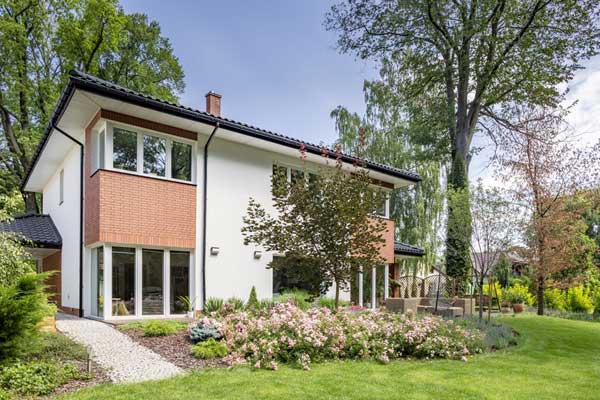Trees can be a great addition to any home, giving you privacy, shade and something pretty to look at. But they can also be the root of big problems.
If you're unsure about how to deal with a neighbour's tree encroaching on your space, or are worried about the cost of repairing damage caused by falling branches, read on.

Do trees near my property make it harder to get insurance?
Homeowners with trees close to their buildings won't find their insurance premium any more expensive, or the process of taking out insurance any more complicated. But some insurers might ask how close trees are to your home, and include what they'll cover you for in the case of damage.
Am I insured if a tree falls on my property?
Most insurers cover falling trees as standard, so if you wake up one day to a tree branch on your kitchen table instead of your breakfast, you're likely to be covered.
That said, if there is any damage to your property or possessions caused by lopping, topping or felling of trees on your property, you won't be covered.
What can I do if a neighbour's tree damages my property?
If a neighbour's tree causes damage to your property, you probably won't be able to claim against them. For unlike car insurance, where your insurer can recover losses from a third party if you're not at fault, home insurance only covers the owner's property.
You may be able to recoup some of the cost if you can prove your neighbour was negligent in some way. But you'll need to claim against your own insurance policy for the damage, and you'll have to pay the excess. You can attempt to recover the excess from your neighbour through the small claims court, though it's best to resolve the issue between yourselves.
Will insurance cover tree removal?
Unless it's an instruction coming straight from your insurer, no. Not only would you have to cover the cost yourself, you should first check if a tree has a preservation order or TPO.
Tree Preservation Orders are made by the local planning authority to protect trees of particular interest or where they contribute to local amenity. Each individual case will be decided by your local council, and you'll need to prove that there's a valid reason you want the tree removed.
Complaining that a tree is too large, blocks a bit of your sunlight, or is too close to the house are not good enough reasons – it must be dead or dangerous. Consent is still required for diseased or dying trees.
Trees and subsidence
Trees near your home don't have to crash through your roof to cause damage. When they remove water from the soil the ground can dry and shrink, which can lead to subsidence.
To avoid the risk of damage, tree roots and shrubs shouldn't be planted too close to your property. A general rule is to plant a tree as far away from a property as its estimated fully grown height.
If you're looking to keep your house protected from badly behaved branches, we'd be happy to give you a home insurance quote today.
